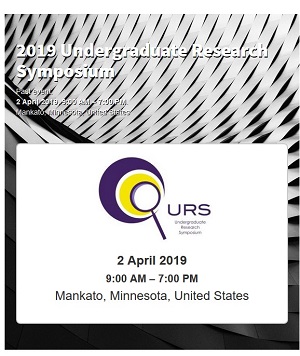The Effects of Hexavalent Chromium on Dictyostelium Chemotaxis and Proteome
Location
CSU Ballroom
Start Date
2-4-2019 10:00 AM
End Date
2-4-2019 11:30 AM
Student's Major
Chemistry and Geology
Student's College
Science, Engineering and Technology
Mentor's Name
Rebecca Moen
Mentor's Department
Chemistry and Geology
Mentor's College
Science, Engineering and Technology
Description
Hexavalent chromium (Cr6+) is a common environmental pollutant extensively used in industrial processes like chrome-plating, leather tanning, and paint making that is capable of accumulating in aquatic vascular plants and tissue of animals. The uneven geographical distribution of chromite mining makes this issue a global one and indicates that further study of Cr6+ may lead to targeted treatment in individuals who ingest contaminated water and wildlife or suffer from direct skin contact with contaminated soil. Dictyostelium discoideum is a soil-dwelling eukaryote that contains many genes that are homologous to human genes while exhibiting a simple lifecycle, restricted cell types and behaviors, and rapid growth. Dictyostelium is widely regarded as a good model organism for studying eukaryotic cell response to toxic compounds. The aim of the study is to determine how hexavalent chromium affects cytoskeletal proteins, specifically actin, and the movement of Dictyostelium in response to Cr6+. A focus is placed on actin and its associated proteins because it has been shown to be a key player specialized stress signaling pathways, and its associated proteins may be multifunctional and may be implicated in a variety of conditions. Chemotaxis, cell movement in response to an external stimulus, was assayed following cell treatment to determine how cell signaling changes as a result of Cr6+ exposure altered the assembly of the actin network. Differences in the actin network of both the treatment and control groups were visualized using fluorescence microscopy. Electrophoresis was then performed on control and treatment groups to resolve proteins and identify specific changes in the expression of actin and its associated proteins.
The Effects of Hexavalent Chromium on Dictyostelium Chemotaxis and Proteome
CSU Ballroom
Hexavalent chromium (Cr6+) is a common environmental pollutant extensively used in industrial processes like chrome-plating, leather tanning, and paint making that is capable of accumulating in aquatic vascular plants and tissue of animals. The uneven geographical distribution of chromite mining makes this issue a global one and indicates that further study of Cr6+ may lead to targeted treatment in individuals who ingest contaminated water and wildlife or suffer from direct skin contact with contaminated soil. Dictyostelium discoideum is a soil-dwelling eukaryote that contains many genes that are homologous to human genes while exhibiting a simple lifecycle, restricted cell types and behaviors, and rapid growth. Dictyostelium is widely regarded as a good model organism for studying eukaryotic cell response to toxic compounds. The aim of the study is to determine how hexavalent chromium affects cytoskeletal proteins, specifically actin, and the movement of Dictyostelium in response to Cr6+. A focus is placed on actin and its associated proteins because it has been shown to be a key player specialized stress signaling pathways, and its associated proteins may be multifunctional and may be implicated in a variety of conditions. Chemotaxis, cell movement in response to an external stimulus, was assayed following cell treatment to determine how cell signaling changes as a result of Cr6+ exposure altered the assembly of the actin network. Differences in the actin network of both the treatment and control groups were visualized using fluorescence microscopy. Electrophoresis was then performed on control and treatment groups to resolve proteins and identify specific changes in the expression of actin and its associated proteins.
Recommended Citation
Daniel, Hanix. "The Effects of Hexavalent Chromium on Dictyostelium Chemotaxis and Proteome." Undergraduate Research Symposium, Mankato, MN, April 2, 2019.
https://cornerstone.lib.mnsu.edu/urs/2019/poster-session-A/6



